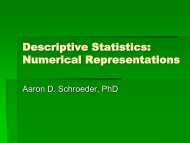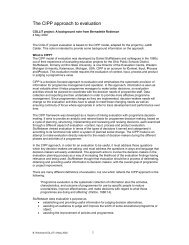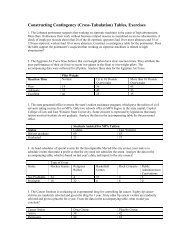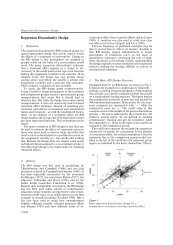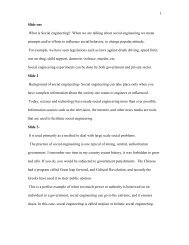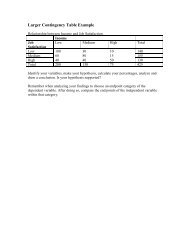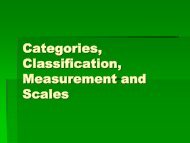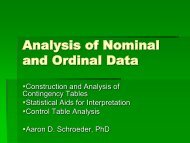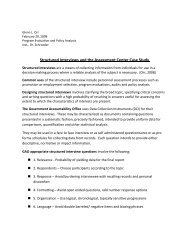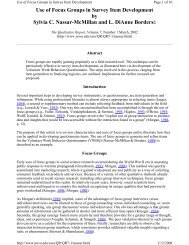The Problem
The Problem
The Problem
Create successful ePaper yourself
Turn your PDF publications into a flip-book with our unique Google optimized e-Paper software.
stakeholders or a manager who is considerate of their claims on the process at hand.<br />
Dangerous stakeholders score high on both the urgent and powerful attributes are<br />
classified as dangerous because they lack legitimacy in the process. <strong>The</strong>se stakeholders<br />
are likely to use coercive or utilitarian power to influence a process as opposed to<br />
symbolic power. It is important to note that these are subjective descriptions. Thus,<br />
classifying a stakeholder as “dangerous” does not automatically imply that they should be<br />
excluded from the process. Many “dangerous” stakeholders are critical to a fair and<br />
equitable stakeholder process. How and when these types of stakeholders are included<br />
will ultimately depend upon the needs and the stage of implementation.<br />
Latent or Tertiary Stakeholders<br />
Within this category, there are also three possible categories under which stakeholders<br />
can be classified. Dormant stakeholders score high only on the power category. <strong>The</strong>se<br />
stakeholders are unlikely to exercise any of their power without any sense of urgency or<br />
legitimacy with respect to the process, but possess the potential to change status rapidly.<br />
<strong>The</strong> second category is discretionary. <strong>The</strong>se stakeholders score high on legitimacy, and<br />
as such, have no power to assert their claims, nor a sense of urgency to make themselves<br />
be heard. Demanding stakeholders are those who are neither powerful nor legitimate, but<br />
perceive a deep sense of urgency with respect to a particular issue, and hence, try<br />
desperately to enter the field of legitimate and powerful stakeholders, and generally have<br />
to rely on others to help them voice their concerns.<br />
While these categories are most easily described in categorical terms, the reality of<br />
stakeholder management tells us that these characteristics occur across dynamic<br />
continuums (Mitchell, Agle and Wood, 1997). Any stakeholder, at any time, can move in<br />
or out of a different classification or may simultaneously occupy more than one category<br />
depending upon the nature of the problem.<br />
Identifying Threatening and Cooperative Stakeholders<br />
15



